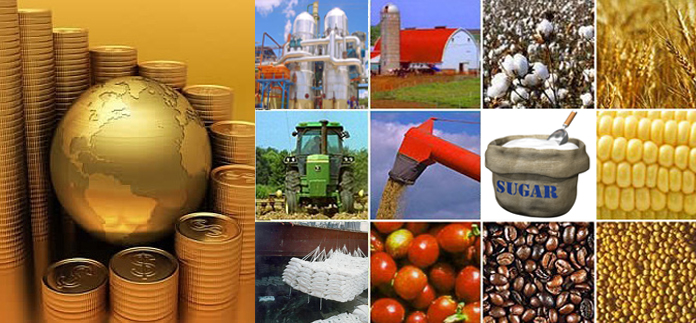by Brian Dolan
What is it?
Commodities are a separate asset class focused on raw materials used to produce finished goods. Commodities generally fall into six categories: energy (e.g. natural gas and crude oil); grains (e.g. corn and wheat); industrial metals (e.g. aluminum and copper); precious metals (e.g. gold and silver); livestock (e.g. hogs and cattle) and ‘soft commodities’ (e.g. orange juice and cotton). Investors can trade single commodities on an individual basis through futures, or through index ETNs that group commodities together, such as an energy index ETN comprised of crude oil, natural gas, gasoline, and heating oil. A broader grouping of many different commodities is referred to as a diversified index ETN.
Commodity prices are primarily driven by supply and demand, but are also affected by a wide range of frequently unpredictable factors, such as weather, civil unrest, and crop diseases, to mention just a few. As such, commodities represent a high-risk asset class prone to sharp volatility (the degree of price changes), both up and down. (See important risk disclaimer below.)
Why it’s important
Commodities can offer a source of diversification in an investment portfolio composed of more traditional investments, such as stocks and bonds, since commodities have a lower correlation with those asset classes. Commodities can also provide a vehicle for more aggressive investors (risk seekers) to express a view on the market direction of a particular commodity (e.g. you think oil prices are likely to increase). Investors can also invest in a diversified commodity index fund to express a view on raw material prices in general, which may reflect an investor’s belief that economic growth will be strong (potentially strengthening demand for commodities and causing prices to move higher) or that inflation pressures are likely to increase (possibly sending commodity prices higher).
The table below shows 2-years of daily correlations between indexes of 5 asset classes and a broad commodity index (CRB) and several specific commodities.
| Asset Class | CRB Commodity Index (broad) | Gold Spot $/Oz | Silver Spot $/Oz | WTI Crude Oil future |
|---|---|---|---|---|
| Stocks-MSCI World Equity Index | 0.48 | 0.174 | 0.242 | 0.46 |
| Stocks-S&P 500 US Equity Index | 0.393 | 0.133 | 0.188 | 0.444 |
| Stocks-FTSE Emerging Market Equity Index | 0.386 | 0.157 | 0.24 | 0.303 |
| Govt. Bonds-7-10 Yr. US Treasury | -0.174 | 0.198 | 0.089 | -0.216 |
| Real Estate-DJ US Real Estate Index | 0.27 | 0.178 | 0.19 | 0.279 |
What do I do with it?
Commodities represent another way to diversify an investment portfolio, but due to the higher risk associated with commodities (high price volatility), investors should carefully consider how much exposure to commodities they’re prepared to accept, typically no more than 5-10% of any portfolio.
Important risk disclaimer: All investing carries risk. Past performance is not indicative of future returns, which may vary. Investments in stocks and ETFs may decline in value, potentially leading to a loss of principal. Online trading has inherent risk due to system response and access times that may be affected by various factors, including but not limited to market conditions and system performance. An investor should understand such facts before trading.
Invest with a purpose. You. Invest in your goals while getting help every step of the way -> http://idrivewealth.com


